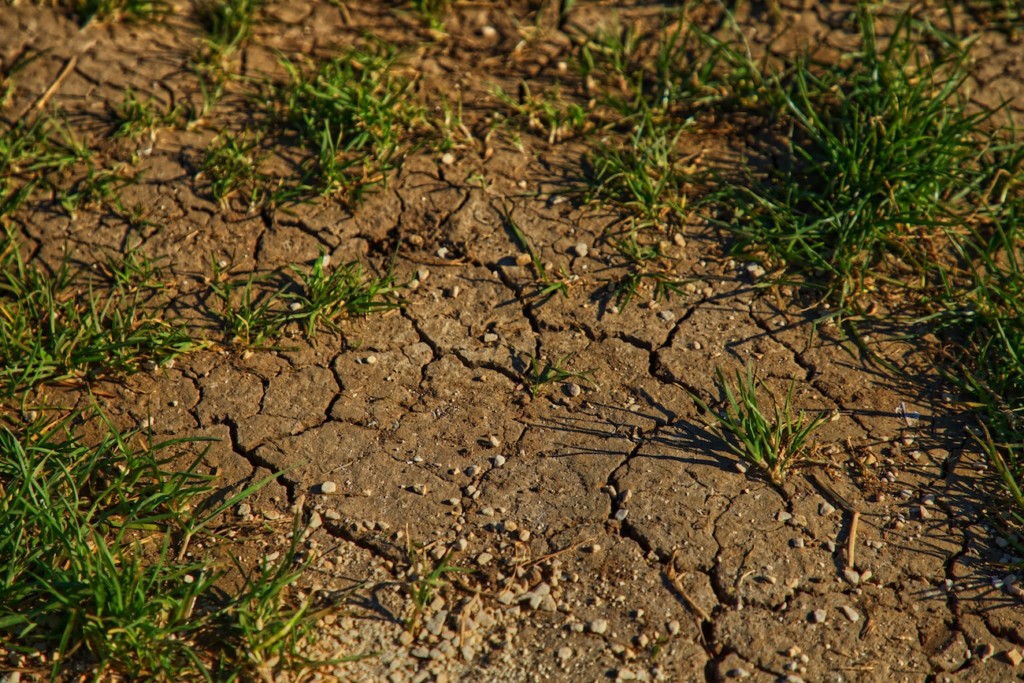Yara: the fertiliser giant causing climate catastrophe
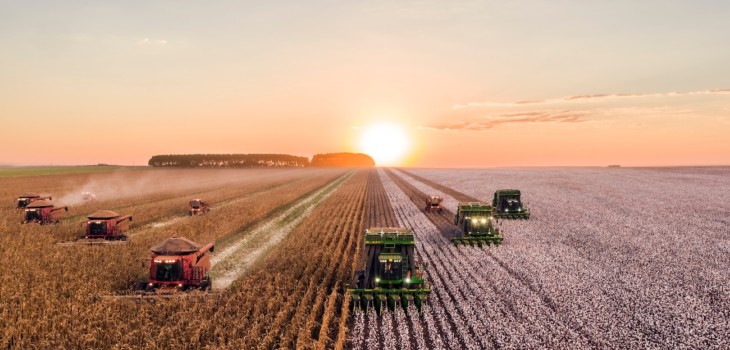
Next month a group of people will try to close down one of Europe’s biggest fertiliser plants. Called ‘Free the Soil’, the action aims to expose the devastating practices of the industrial agricultural system and the few companies that control it. Between 19 and 25 September, there will also be an Agriculture and Climate Justice Camp that will try to build space for alternatives to industrial agriculture and capitalism.
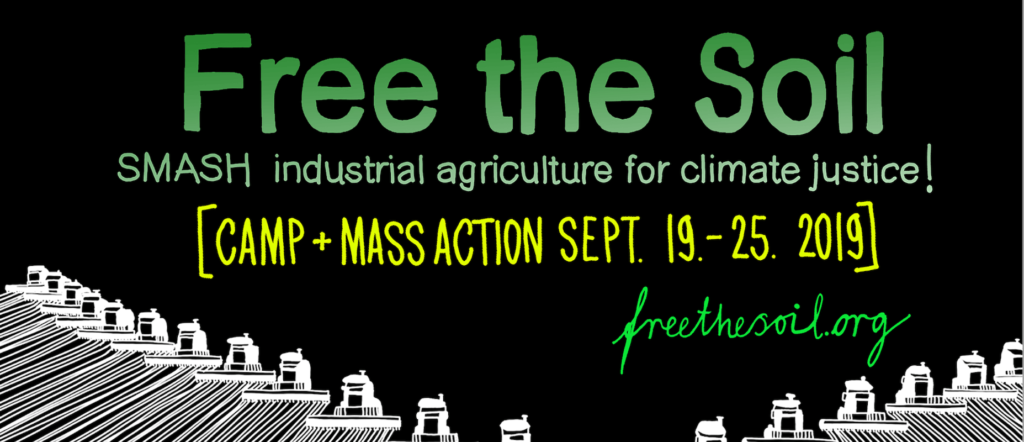
The target is a plant producing ammonia and urea fertilisers run by Yara International, one of the world’s biggest fertiliser companies. It is situated in Brunsbüttel, northern Germany.
In this investigation, Corporate Watch takes an in-depth look at Yara to find out who’s running it, who’s profiting from it and what its plans are for the future.
 Key Points
Key Points
- Yara is a Norwegian chemical company that is one of the world’s largest producers of synthetic fertilisers. Synthetic fertilisers are a major contributor to climate change. They also impact soil biology and are contributing to soil degradation around the world.
- Yara is Europe’s biggest industrial buyer of natural gas and actively lobbies for fracking.
- Yara invests millions in shaping the international agricultural agenda, and is currently targeting Africa, Brazil and India.
- Yara is largely owned by the Norwegian government, which has over 40% of its shares.
- Yara has recently been involved in one of Norway’s biggest corruption scandals, when the company was caught paying millions in bribes to Indian and Libyan officials.
- Land workers resisting industrial agriculture promote agroecology as an alternative to synthetic fertilisers.
Do you have information about Yara you’d like to share with us, or is there anything else you’d like us to look into? Click here to get in touch.
Contents
- Synthetic Fertilisers and Climate Change
- Yara: The Basics
- A Brief History of Yara
- Yara’s Global Impact
- Yara’s Political Influence and Greenwashing
- Future Strategy
- Yara in Africa
- Yara Directors and Board Members
- Shareholders
- Following the Money
- Yara’s Vulnerabilities
- Beyond Synthetic Fertilisers: Agroecology and Food Sovereignty
Synthetic Fertilisers and Climate Change
Synthetic fertilisers are artificially made plant nutrition made up of nitrogen, phosphorous, potassium or other ingredients, alone or in combination. It is estimated that between 44% and 57% of global greenhouse gas emissions originate from agriculture and the major role played by industrial agriculture in causing the climate crisis is increasingly recognised.
Yara and the synthetic fertiliser industry contribute to climate change in various ways, including:
Destroying the world’s largest carbon sink – the soil. Synthetic fertilisers impact the soil in many ways. Soils around the world have lost, on average, at least 1–2 percentage points of organic matter in the top 30 cm since chemical fertilisers began to be used. This amounts to some 150,000–205,000 million tonnes of organic matter, which has resulted in 220,000–330,000 million tonnes of CO2 emitted into the air. That is 30 per cent of the excess CO2 in the atmosphere.
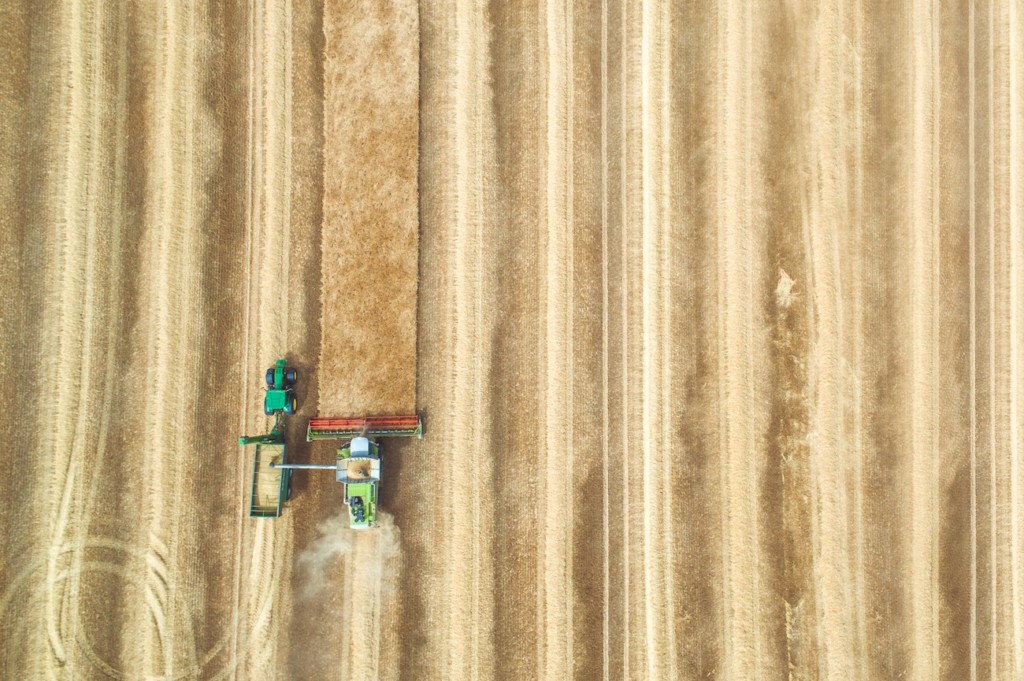
Destroying the ozone layer. The International Panel on Climate Change (IPCC) estimates that for every 100kg of nitrogen fertiliser applied to the soil, 1kg ends up in the atmosphere as nitrous oxide (N2O) gas. This is 300 times more potent than CO2 as a greenhouse gas, and is the world’s most significant ozone-depleting substance.
Huge energy use and greenhouse gas emissions. The main input used to produce nitrogen fertilizer is natural gas, in massive amounts. Agricultural companies’ desire for cheap gas to make fertiliser has led them to push for fracking around the world, adding another layer of environmental damage.
Driving intensive farming. Last but not least, fertilisers have enabled intensive, industrial animal farming on its current massive scale, which would not be possible without artificial fertilisers. The climate change impacts of livestock farming are well documented.
As a leading fertiliser producer, Yara is at the forefront of all this. It makes a great deal of the work it is doing to tackle climate change, presenting itself as a solution to the crisis. It says it is reducing the impact of its fertiliser production by cutting out some of the most harmful emissions such as nitrous oxide. But overall it is making more fertilisers, which means more emissions. Yara’s latest annual report says it produced 16.6 million tonnes of carbon dioxide in 2018, up from 9.8 million tonnes in 2013.
More fertilisers mean more energy. Yara is Europe’s biggest industrial buyer of natural gas. In 2018, Yara’s total energy consumption in production was 301 million gigajoules, with more than 85% of this energy used in ammonia production.
Yara has also been accused of being a key advocate of fracking. In a 2015 report, The Exxons of Agriculture, environmental NGO GRAIN wrote:
“People associate Shell, not Yara, with fracking. But it is Yara that coordinates the corporate lobby for shale gas development in Europe, and it is Yara and other fertiliser companies that suck up most of the natural gas produced by the fracking boom in the US.”
Further environmental harm
There are other consequences of Yara’s work. When surplus nitrates are washed into groundwater, rivers and tap water, this risks an increase in certain types of cancer, and the eutrophication of rivers, killing fish and depositing green algae on coasts.
Scientists who worked on a European nitrogen assessment believe that the environmental cost of excess nitrogen is between €70 billion and €320 billion a year, through impacts to ecosystems, water and air quality and human health. (Source: Mark A Sutton et al (eds), The European Nitrogen Assessment: Sources, Effects and Policy Perspectives, Cambridge University Press, 2011.)
In Western Australia, a Senate Inquiry has warned that Yara’s plants on the Burrup Peninsula are damaging 40,000-year-old rock art. Scientists believe the resulting emissions are increasing atmospheric acidity that is dissolving the rocks.
Impacts on the soil
Jason McKenny, author of ‘Artificial fertility: The Environmental Costs of Industrial Fertiliser’ describes the cascade of adverse effects that synthetic fertilisers have on the soil:
“Fertiliser application begins the destruction of soil biodiversity by diminishing the role of nitrogen-fixing bacteria and amplifying the role of everything that feeds on nitrogen. These feeders then speed up the decomposition of organic matter and humus. As organic matter decreases, the physical structure of soil changes. With less pore space and loss of their sponge-like qualities, soils are less efficient at retaining moisture and air. More irrigation is needed. Water leaches through soils, draining away nutrients that no linger have an effective substrate on which to cling. With less available oxygen the growth of soil microbiology slows, and the intricate ecosystem of biological exchanges breaks down. Acidity rises and further breaks down organic matter. As soil microbes decrease in volume and diversity, they are less able to physically hold soils together in groups called aggregates. Water begins to erode these soils away. Less topsoil means less volume and biodiversity to buffer against these changes. More soils wash away. Meanwhile, these events have a cumulative effect of reducing the amount of nutrients available to plants. Industrial farmers address these observed deficiencies by adding more fertiliser. Such a scenario is known as a negative feedback loop; a more blunt comparison is substance abuse.”
Yara: the basics
Yara International ASA is a Norwegian chemical company. Its largest business is the production of nitrogen fertilisers, the world’s most common fertiliser. Yara also produces nitrates, ammonia, urea and other nitrogen-based chemicals.
Yara makes its fertiliser from natural gas – lots of it. As of 2017, Yara was Europe’s biggest industrial buyer of natural gas. Then, according to the company’s website:
“In several transformation steps, natural gas, essentially methane, is upgraded by combination with nitrogen from the air to form nitrogen fertilizer.”
The combination of methane and nitrogen creates either ammonium nitrate or urea, which are then mixed with other ingredients to make the finished fertiliser. Two other big ingredients are potash and phosphates. Yara is the world’s second largest buyer of potash, as well as mining some itself. It is the world’s third largest buyer of phosphates.
As well as making fertiliser, Yara sells ammonia it produces to other industries, such as textiles, cars, healthcare and cosmetics. Yara says it trades “about one-third of the world’s ammonia with plants across the world”.
In 2018, Yara produced 21.8 million tonnes of fertiliser and another 8.3 million tonnes of ammonia.
Yara operates across six continents with almost 17,000 employees. It has more than 25 plants and mines. It has production plants in Australia, Belgium, Brazil, Canada, Colombia, England, Finland, France, Germany, India, Italy, Libya, the Netherlands, Norway, Sweden and Trinidad and Tobago. Click here for a full overview of Yara’s global operations on the company website.
The fertiliser it makes is then distributed around the world, with 200 “terminals” playing a “crucial” role storing or transporting products. Yara fertiliser is sold to farmers through third party outlets or 9,000 “retail outlet customers that are fully Yara branded and promote our crop nutrition solutions”.
Yara has also manufactured the world’s first electric container ship to help transport its goods.
You can find a list of Yara sellers on the relevant country page of the company’s website.
A brief history of Yara
The company was established in 1905 as Norsk Hydro – the world’s first producer of mineral nitrogen fertilisers, using cheap hydropower for its industrial activities. The company then started opening factories in Norway producing NPK fertilisers (nitrogen, phosphorous and potassium).
A piece of history you won’t find on the Yara website is the company’s collaboration with the Nazis. In the second world war, after Norway was occupied, Norsk Hydro greatly profited from supplying aluminium to the Nazi regime, to be used in the Lüftwaffe’s aircraft.
In the 1960s, Norsk Hydro began to expand internationally, starting in Qatar. The company was soon working across Asia, the Middle East and North America. The ‘60s also saw Hydro getting involved in oil exploration in the North Sea. The business model was one of rapid acquisition as Hydro took over major fertiliser companies in France, Germany, the Netherlands and the UK. By the end of the 1990s, Hydro was also established in Brazil and South Africa.
In 2004, the fertiliser part of Hydro’s business split off, taking the name Yara International. Its shares were listed on the Oslo Stock Exchange and Yara is now active all over the world, operating in 60 countries on six continents and selling its products to more than 160 countries.
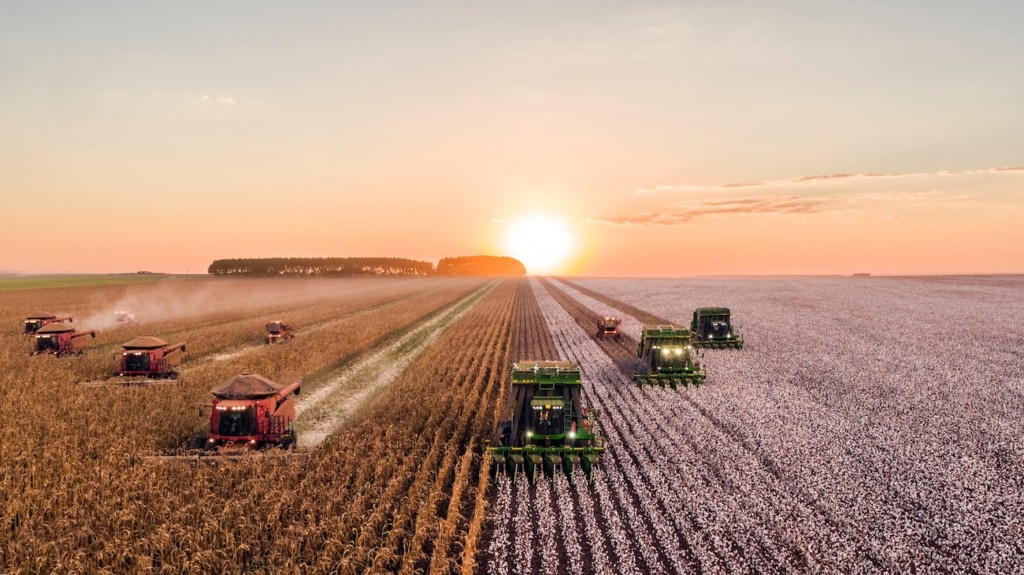
Yara’s global impact
Yara has been a major player in the growth of industrial agriculture, which has displaced traditional ecological knowledge. This has pushed millions of farmers into debt and poverty, radically reduced food sovereignty, destroyed soils and polluted waters, and significantly contributed to global warming and climate change.
Corruption scandal
One of the most extreme controversies in recent years was Yara’s bribery scandal, which led to one of the highest profile corruption cases in Norwegian history. The case involved the use of bribes directed at highly placed public servants in Libya and India from 2004 to 2009. Investigators also uncovered bribes paid to a Russian supplier. More than NOK 70 million ($7.7 million) changed hands between Yara and various officials to enable the company to start joint ventures in the countries. Yara acknowledged corruption and was fined NOK 295 million ($32.7 million).
In 2015, four top Yara executives, including former CEO Thorleif Enger and chief legal officer Ken Wallace, were convicted for bribery and given prison sentences. In 2016 the verdict for Enger and others were overturned on appeal but Wallace’s verdict was upheld.
Worker deaths
Yara is still trying to recover from hitting the headlines this winter when a man died and another was injured at their at the fertilizer production site in Montoir-de-Bretagne, France. Over the last five years, workers also lost their lives in Brazil, Costa Rica, Norway and Mexico (Source: Yara Annual Reports).
‘Cartel’ Price Hikes
Farmers are angry about the corporate dominance of fertiliser production and the associated price hikes. John Coughlan of the Irish Farmers Association says: “substantial and unwarranted price hikes clearly demonstrate that the internal EU fertiliser market is dysfunctional, with Irish and EU farmers being forced to pay the highest fertiliser prices in the world”.
Cultivating Power: Yara’s Political Influence and Greenwashing
When you click on the Yara website, you see smiling pictures of small farmers and healthy fields of wheat. But the real impact of Yara’s products on the climate and on communities across the planet is a much uglier story.
Yara is actively trying to frame itself as the “Crop Nutrition Company of the Future”. One that is “protecting the earth’s resources, food and environment”. Yara builds this brand and reputation partially through participating in a wide range of international alliances and development projects. It positions itself as an advisor to governments around the world, especially in the Global South, and actively tries to shape their agricultural policy decisions.
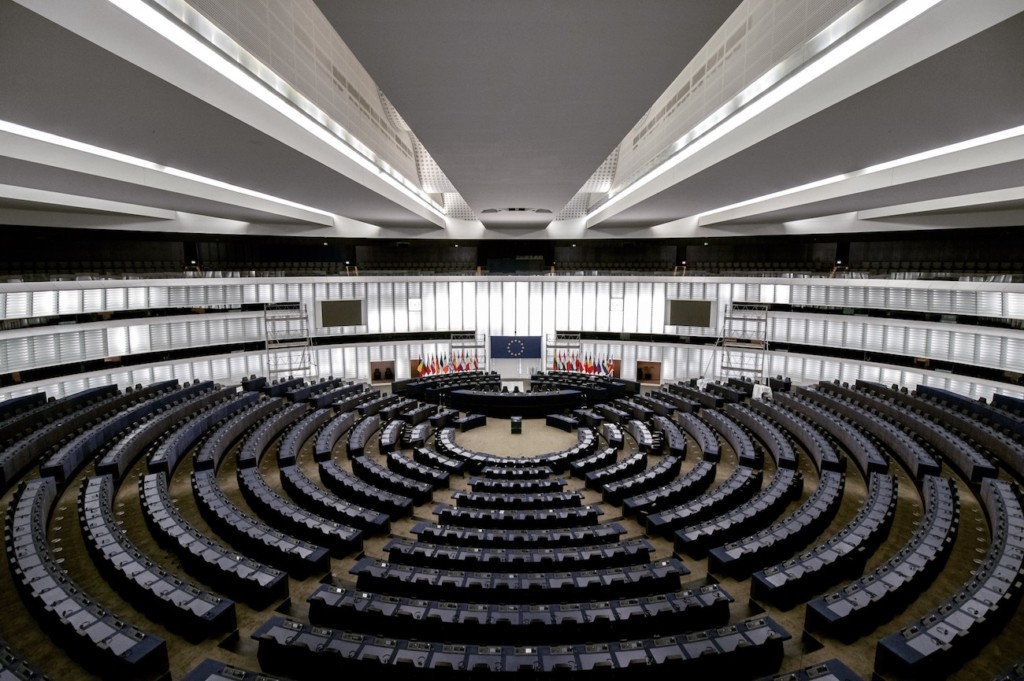
A snapshot of Yara’s EU Lobbying
According to Lobbyfacts, using information provided by Yara for the EU Transparency Register, in 2018 Yara spent at least €400,000 on lobbying the EU. A look at the historical data shows that altogether Yara has spent somewhere up to €11,849,995 on lobbying the EU since 2010.(i)
Yara lists four lobbying groups it works with. The figures relate to how much each organisation has spent on lobbying, not the amount Yara has paid them.
- Fertilizers Europe: up to €899,000 spent in 2018, 8 lobbyists registered, 20 meetings with the Commission.
- International Fertilizer Organisation: not registered on the database.
- Friends of Europe: up to €3,765,491 spent, 29 lobbyists, 30 meetings with the Commission.
- CEFIC (Association of the European Chemicals Industry): up to €12 million spent, 76 lobbyists and 81 meetings with the Commission.
The total lobby spending declared by Yara and these lobbying groups amounts to over €16 million a year, with a total of 113 lobbyists working for them and a total number of 131 meetings with the Commission.(iii)
This network helps Yara to repeat its messages through powerful channels. For instance, Fertilizers Europe holds the current presidency of the Agri-Food Chain Coalition, a lobbying coalition gathering together most of the agribusiness industries (fertilisers, pesticides, machinery, seeds, big farmers, commodity traders, food multinationals, supermarkets, etc.).
CEFIC, the lobby group for the European chemical industry, is a keen advocate of fracking in Europe and of importing fracked gas from the US. During the failed EU-US talks in 2013-2016 on the Transatlantic Trade and Investment Partnership (TTIP) trade deal, one of CEFIC’s key demands was to open the European market to US imports of shale gas. The European fertilizer industry has also been a major proponent of fracked gas in Europe.
Experts, Advisory Groups and Hired Guns
Yara sits in the EU’s Gas Coordination Group, on behalf of IFIEC Europe. This influential advisory group looks at the security of supply and provides its members with privileged access to upcoming plans for new infrastructure and other Commission proposals.
Fertilizer Europe, which Yara is a member of, is itself a member of a long list of expert groups, among them the influential Expert Group on Climate Change Policy and the High Level Expert Group on Energy-Intensive Industries.
Another way to increase influence in Brussels is to pay lobby consultancies to secure access to decision-makers and increase the outreach of your messages, and consultancy Logos Public Affairs lists Yara as a client.
Media power
A growing marketing strategy in the Brussels bubble is to sponsor media and pay for promoted content. Euractiv is a Europe-wide TV network which focuses on EU policy news. Yara sponsors a politics programme called “the Brief powered by Yara”, which carries sponsor messages promoting Yara’s ‘solutions’ for air pollution, for which ammonia emissions from the fertilizers industry are a huge problem. Euractiv also features promoted content by Yara.
Yara also exerts influence over agricultural journalism to promote synthetic fertilisers. For example, until 2016 it sponsored a Journalism Award in partnership with the Guild of Agricultural Journalists. It also created the IFAJ-Yara Award for Reporting on Sustainable World Agriculture, run by the The International Federation of Agricultural Journalists, a network of more than 5,000 people.
Future strategy
Yara’s last five years were all about expanding its network of plants and distribution centres. In the next five years the company hopes to cash in on all that investment. Who for? Shareholders of course! Yara’s annual report makes clear generating “satisfactory returns for shareholders” is a “top priority”.
Shareholders haven’t done badly from the company recently – its accounts show Yara has paid out almost $2 billion to them in the last five years. But payouts have been declining in line with profits (just $240 million was paid out in 2018, compared to $517 million in the bumper year of 2016).
How to give the Norwegian state and its fellow shareholders the returns they expect? Grow and make more profit: “improving margins [i.e. profits] and growth are the two only ways of creating shareholder value”, according to the company’s annual report. Yara says it intends to pay out at least 40 per cent of its profits it makes over the next five years to shareholders.
In a presentation to investors at London’s Tate Modern Museum in July, company bigwigs outlined Yara’s plans. Chief among them is selling more of its expensive fertiliser brands.
Specifically, the company outlined plans to sell over 100 million units of its YaraVita fertiliser by 2025, compared to 40 million in 2018. Unlike most other fertilisers, YaraVita – produced in Yara’s Sumare plant in Brazil and Pocklington plant in the UK – is designed to be sprayed directly onto leaves, “developed to target the leaf or fruit, to work fast and to effectively overcome crop deficiencies”. According to Yara it will be particularly good for farmers growing “commodity crops” to be traded.
Yara also plans to bolster its work with food companies – essentially to get access to these companies’ farmers or other suppliers. It hopes to grow “crop solution” sales through food companies from 300,000 tonnes to two million tonnes by 2025.
But Yara’s main priority may be expanding in India. It bought the major Babrala Urea plant from Tata Chemicals in 2018. Yara has big plans for the country, which it told investors was “an area that represents a big untapped potential for our solutions, especially the YaraVita range of products.”
The company also looked forward to deregulation of the Indian fertiliser market, noting “the market growth potential for premium products would increase significantly” if that were to happen.
Yara’s major shareholder will no doubt help ease Yara’s way. When Hindu nationalist prime minister Narendra Modi was re-elected in May this year, his Norwegian counterpart Erna Solberg sent him her “warmest congratulations” and looked forward to “further developing our cooperation in our many fields of common interest”.
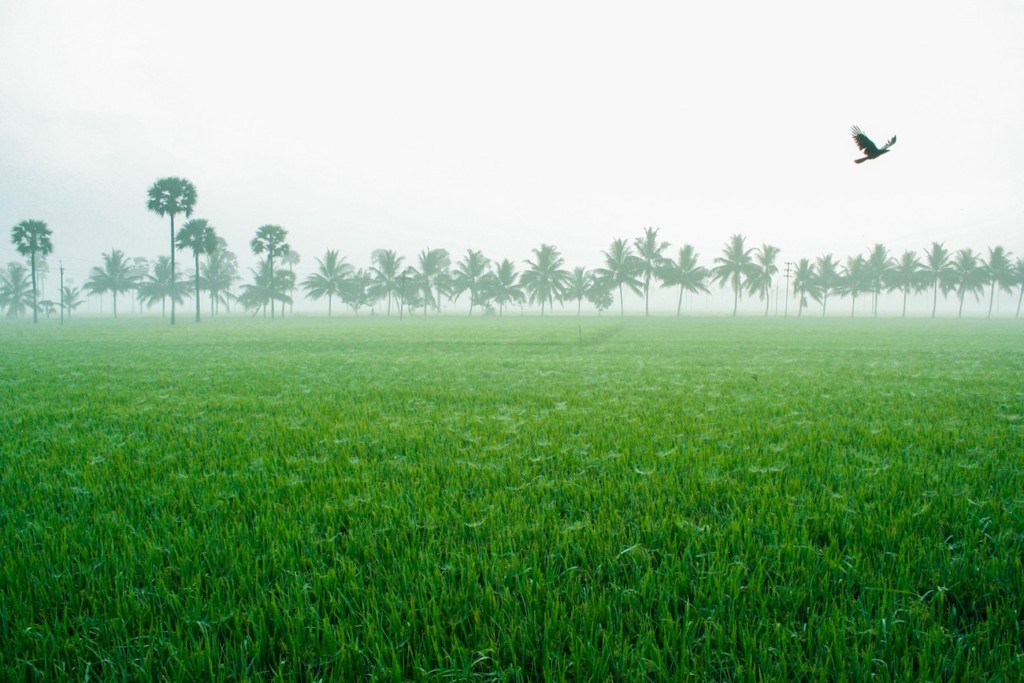
Yara in Africa: Neocolonialsm and the ‘fight against hunger’
Longer-term, Yara is looking to Africa. Yara boss Svein Tore Holsether said in 2017:
“Africa is going to be our largest market at some point. I am just looking at the fundamentals — land availability, climate, water — tick all the boxes on that. I do believe the fundamentals are in place.”
Yara has stimulated fertiliser sales across the continent through skilfully wrapping itself in a humanitarian mantle. It created the Yara Foundation in 2005 to “support the fight against hunger in Africa”. In 2016, the first of three annual African Green Revolution Conferences took place in Oslo. The conferences built momentum for a more structured partnership, whereby there is now an annual African Green Revolution Forum co-sponsored by Yara, as well as agencies such as UKAID and companies like Syngenta.
Yara is also part of the New Alliance for Food Security and Nutrition, which is a “co-operation framework” that launched at the 2012 G8 Summit in the US. It aims to “accelerate responsible investment in African agriculture and lift 50 million people out of poverty by 2022”. The alliance brings together African governments, private sector companies and donor partners, including the Melinda and Bill Gates Foundation.
The approach of all of these initiatives is to move people away from subsistence and smallholder agriculture into capitalist production growing for commodity markets. One through which farmers become dependent on commercial inputs such as synthetic fertilisers, patented hybrid and genetically modified seeds, herbicides and pesticides. The monocultural models reduce farmer resilience and biodiversity and put power in the hands of food corporations.
Earlier this decade, Yara pioneered the concept of “African Agricultural Growth Corridors,” a framework for the development of infrastructure to support intensive agriculture across Africa, especially Mozambique and Tanzania. The corridors were criticised as ways to allow corporations to grab land away from small farmers, ushering in intensive monoculture and synthetic fertiliser use.
Beyond fertiliser sales, Yara has an increasing number of production plants across Africa and it is planning to build a gas-fired fertiliser plant in Mozambique, in partnership with Shell and GL Africa Energy.
While Modi is Yara’s current favourite despot, it has form with others. In 2005, Yara created the African Green Revolution Yara Prize and gave it, along with NOK 1 million, to Ethiopia’s President Meles Zenawi. This was the year after Zenawi’s security forces had detained over 4,000 opponents to the regime, with frequent evidence of detention, torture and harassment. Three months later Yara was awarded NOK 12.5 million in Ethiopian contracts.
Mining Impacts
Yara’s impact will continue to be felt elsewhere. In Quebec, Canada, for example, the Arnaud Mine is a $750 million phosphate mine approved in 2015. The project is majority-owned by Investment Quebec, the province’s industrial development arm. Yara will receive the phosphate shipped to them in Norway. At more than 1km wide, the Arnaud Mine is the largest open pit mine in Quebec. In its report to the Environment Minister, BAPE (Le Bureau d’audiences publiques sur l’environnement) warned that over its 23 years of operation, the mine would emit an estimated 2,000 to 4,00 tonnes of contaminants that would flow downhill into the nearby Baie des Sept-Îles. Campaigners resisting the project said they were targeted with intimidation.
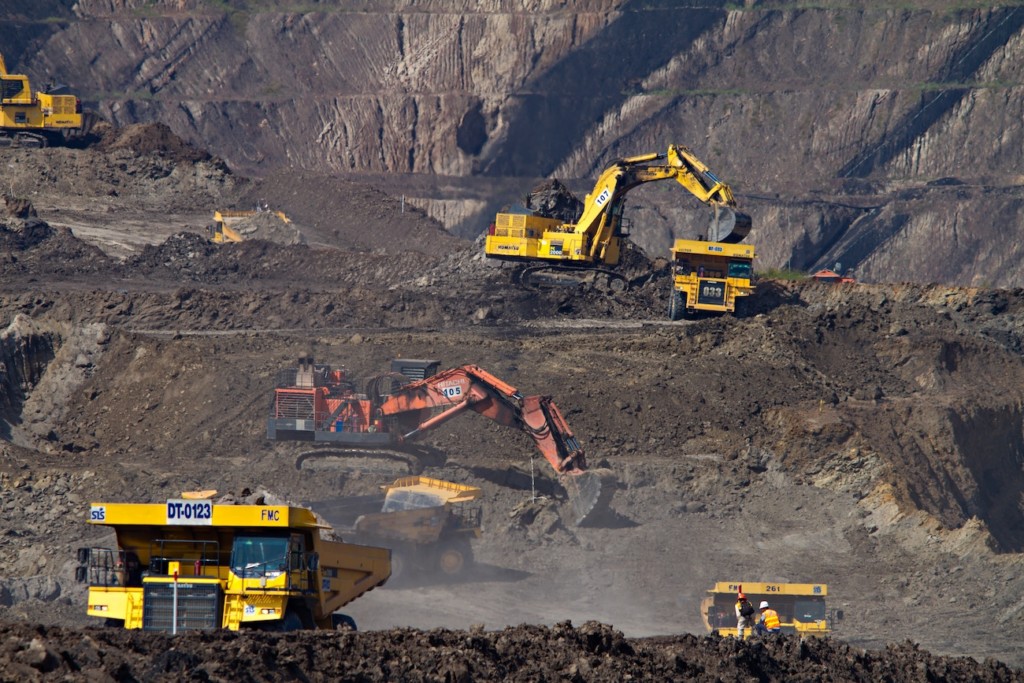
Who’s in charge?
Yara’s management team runs the company on a day-to-day basis. It is overseen by a board of directors, with shareholders voting on overall strategy and directors’ appointments at Annual General Meetings. No single shareholder has a majority stake in the company, but the Norwegian state is by far the biggest, controlling over 40% of the company’s shares.
Norwegian capitalism features a close-knit network of major corporations which are largely owned by the government, and work closely with it. This is plain to see in both Yara’s management team and its board. Executives and directors move between a handful of state-backed companies such as Norsk Hydro (Yara’s former parent company), Sapa, Equinor (formally Statoil), Statkraft, Vy group, and DNB bank.
You can find information on Yara’s directors and board members in the appendix.
Executive pay
Yara published a detailed table of the pay-outs to their bosses in their Annual Report. Topping the charts is CEO Svein Tore Holsether who took home more than $1.6 million in salary and benefits in 2018. Yara Vice President in Brazil, Lair Hanzen accrued a whopping $1.2 million in a country with one of the world’s highest levels of income inequality. Brazilian newspaper Estado estimates that a worker on the bottom end of the pay scale is likely to earn $77.40 per month. Landworkers are even more precarious and may earn even less.
Shareholders
Yara is a ‘listed’ company (PLC) – its shares are bought and sold openly on the Oslo stock exchange. But it has one particularly big owner: the Norwegian state. Currently, the government directly owns 36% of Yara, and its pension fund manager owns another 6%. The finances section below describes other investment in Yara that is facilitated by the Norwegian state. All this gives the government significant power over how the company is run.
Being the largest shareholder, the Norwegian State is intimately connected to Yara and its impact in the world. The Norwegian National Statement at the 2018 UN Climate Conference talks about increasing ambitions on climate change and the creation of a “low emission society”. At the same time, Norway props up and profits from one of the biggest fertiliser companies in the world.
The country made headlines earlier this year when Norway’s Government Pension Fund Global (GPFG), a state-owned investment fund worth approximately a trillion dollars, announced it would be divesting from oil and gas exploration. The GPFG said the decision was motivated by a desire to protect the Norwegian economy by reducing exposure to oil price falls, rather than climate concerns. The fund also remained invested in major fossil fuel companies that have an involvement in renewable energy.
Yara’s other shareholders include important Norwegian financial institutions, but also the usual range of international investment funds who own shares in pretty much all the world’s major corporations. None of these holds more than a few per cent. Overall, 56% of Yara is owned by Norwegian capital; 17.5% by investors based in the US; 11.5% in the UK; 11.8% in the rest of the EU.

Here are the top 20 shareholders, as of July 2019.
(NB: many of these shares are held through third party banks, called “nominee accounts”, which disguises the true ownership. However, thanks to Norwegian transparency rules, Yara also publishes a list of its top twenty “real owners”, and this is the list we use here.)
- Government of Norway. 36.2%.
- Folketrygdfondet. 5.9%. This is the institution that manages the Norwegian government’s pension fund. It is run by an independent board of directors, but ultimately owned by the Ministry of Finance. It is Norway’s biggest investor, owning around 5% of the whole Oslo stock exchange.
- Capital Group. 2.5%. Massive US-based global investment fund manager. HQ in Los Angeles, has offices all around the world including in many European countries.
- Vanguard Group. 1.7%. The world’s second biggest investment manager (after BlackRock, below). HQ in Pennsylvania, US, with operations worldwide including in Europe.
- DNB (Den Norske Bank). 1.3%. DNB is the biggest financial corporation in Norway, which includes a major investment bank and a fund management arm. Like Yara, it is listed on the Oslo stock exchange but with a major shareholding from the Norwegian government. There are close ties between DNB and other big Norwegian corporations, as well as with the government. For example, at least two of Yara’s board members are former DNB employees.
- Fidelity. 1.2%. Another of the world’s top ten investment fund managers. HQ in Boston, USA
- Nordea. 1.1%. Nordea calls itself “the largest financial services group in the Nordic region”, formed by the merger of several big banks from Denmark, Norway, Sweden and Finland. It’s active across Scandinavia and the Baltic, with HQ in Helsinki, Finland.
- Storebrand. 1%. Norway’s biggest private sector asset manager, invests for pension funds and insurance companies. HQ in Lysaker, Norway
- Ruffer LLP. 0.8%. A relatively small UK based investment fund manager – it manages assets of around £20 billion for rich individuals as well as institutions and charities. It is a limited partnership set up by stockbroker, “philanthropist”, and “committed evangelical Christian” Jonathan Ruffer along with his friend the 14th Earl of Ferrers. The HQ is in London, with offices in Edinburgh, Paris, Hong Kong and Guernsey.
- Franklin Templeton. 0.8%. Another big US investment fund manager. HQ in Fort Lauderdale, United States, and offices worldwide.
- BlackRock. 0.8%. The biggest of all the massive global investment managers. Headquarters in San Francisco, United States. Offices in 30 countries worldwide.
- Polaris Capital Management. 0.7%. US fund manager with an international focus, a lot smaller than the likes of BlackRock. Boston, United States.
- KLP (Kommunal Landspensjonskasse). 0.6%. Norwegian public sector pension fund, which traditionally manages pensions for local government employees and health institutions. It is owned by its customer organisations. Has some record of “ethical” positions such as early divestment from tobacco companies. Based in Oslo, Norway.
- ODIN Fund Management. 0.5%. One of Norway’s top ten local fund managers. The fund’s relationship with the Norse all-father god is not entirely clear, and we have not been able to confirm that investment decisions are based on throwing rune stones or observing the flight of ravens. HQ in Oslo, Norway.
- T. Rowe Price. 0.5%. Another US institutional investor. Its shares in Yara are held by the International (UK) division based in London, United Kingdom.
- Northern Trust. 0.5%. US bank and investment manager based in Chicago, United States
- Alfred Berg. 0.5%. Nordic fund manager active in Norway, Sweden and Finland. A subsidiary of big French bank BNP Paribas. HQ in Oslo, Norway.
- Handelsbanken. 0.5%. Asset management division of one of Sweden’s main high street and investment banks. Based in Stockholm, Sweden.
- Pareto Asset Management. 0.4%. Nordic fund manager with HQ in Oslo, Norway, and officers in Stockholm and Frankfurt.
- Florida State Board of Administration. 0.4%. Public sector institution that manages the Florida state employees’ pension fund, and other state government funds. Based in Tallahassee, United States.
Following the money
In total, Yara sold $13 billion worth of products in 2018, the last year for which figures are available. It sells more of its products in Brazil than any other country. South America as a whole is the biggest regional market, closely followed by Europe, as this table from Yara’s latest annual report shows:
| $ million | |
| Europe | 4,190 |
| Brazil | 3,542 |
| Latin-America | 1,094 |
| Asia & Oceania | 1,947 |
| North-America | 1,511 |
| Africa | 645 |
After all its costs were taken off – including $7.5 billion spent on raw materials and energy – Yara made a profit of $159 million.
This is down on previous years – it peaked at over $1 billion in 2014. Yara CEO Svein Tore Holsether has declared recent figures unsatisfactory. In the most recent annual report, he blames them on increases in natural gas prices (Yara’s main cost), and also notes the company has been on a spending spree of late, buying plants in Brazil and India to expand their operations there, with the latter a particular target for growth.
Despite recent disappointing profits, Yara remains in a very strong financial situation. Its accounts show it is not particularly indebted, even after borrowing an extra $1 billion over the last two years to fund its expansion in Brazil and India. In total it now owes almost $4 billion to lenders but boasts assets of $16.7 billion and equity of $8.7 billion.
Of this debt, the majority – $2.9 billion – is in the form of bonds it has issued to financial markets (the identities of the ‘bondholders’ are not public). Yara bonds are rated as “investment grade” – although only just – by the Standard & Poor’s and Moody’s rating agencies.
The rest is bank loans or overdraft facilities. Yara has a $1.1 billion line of credit it can draw on when needed with 13 major international banks, including Barclays, Natwest, JP Morgan, Deutsche Bank and nine others (full list here). In a novel step, the amount of interest Yara has to pay the banks is linked to its progress in reducing greenhouse gas emissions. Whether this has any significant impact on Yara’s contribution to climate change remains to be seen.
Other lenders Yara owes money to are connected to the Norwegian state – Yara’s biggest shareholder. Yara has a $75 million loan from the Nordic Investment Bank, which Norway is a leading member of, and a $244 million line of credit guaranteed by the Norwegian Export Credit Guarantee Agency, part of Norway’s Ministry of Trade.
Yara’s vulnerabilities
It is easy for campaigners to look at companies like Yara as untouchable because of the sheer scale of their operations and their market dominance. However, Yara has a number of vulnerabilities, especially in a changing fertiliser market.
Production downtime
A major risk factor for Yara is production downtime. This could be from planned development work, or more commonly, accidents and unexpected issues which stall production. Unplanned downtime can scare investors and wobble the share price. With such expensive operations, even a daily delay can result in lost millions. Free the Soil’s action to shut down the fertiliser factory will no doubt economically impact the company if it is successful.
Production plants are also threatened by worker organising and community resistance, as well as by volatile political environments.
Shaky supply chains
Yara is dependent on the supply of several raw materials to make fertiliser and its other products. One of these is natural gas, which has very fluctuating price dynamics because of its difficulty to source. With global resistance to fracking and unconventional gas, the industry experiences many practical and regulatory setbacks that impact its supply chain. Other raw materials like phosphates are increasingly rare and often found in challenging geopolitical locations.
Legal risks
As shown in the recent corruption case, legal challenges can pose serious economic threats to the company. Arrests of directors caused huge instability in the company and it has taken them several years to recover. Likewise, ongoing court cases can cost the company and damage its reputation, affecting the share price. Yara is currently being dragged through the courts for two different cases in Brazil, stating in its latest annual report that it has set aside $1.5 million for the costs.
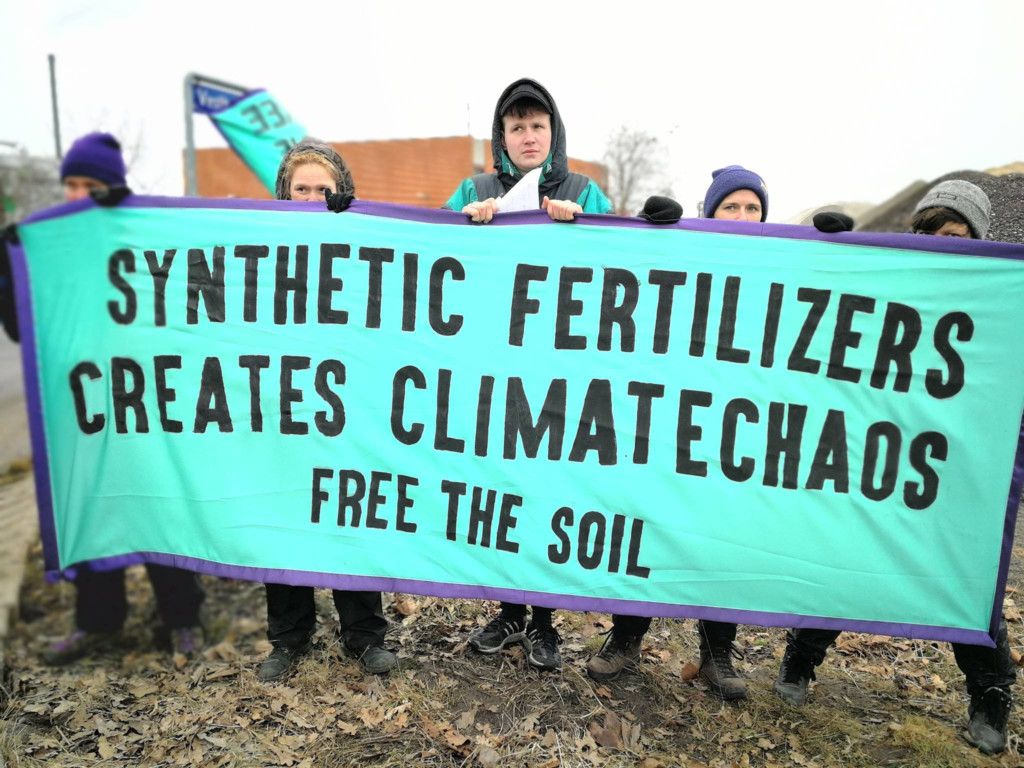
Beyond Synthetic Fertilisers: Agroecology and Food Sovereignty
Synthetic fertilisers have only been in existence since the second world war. Traditional agriculture has been feeding communities for thousands of years before that.
Before synthetic fertilisers, agriculture sustained fertility through the natural cycling of nutrients, composts and manures, using cover crops and leguminous plants in rotation, and all kinds of traditional soil care practices. New advances in soil biology are also showing us further how to tend to the soil food web and work with plants and microorganisms to enable plants to access the nutrients they need.
Do we need synthetic fertilisers to feed people? Land workers resisting industrial agriculture say that we don’t. Instead, they promote agroecology – an approach that puts ecology at the heart of agriculture. This encompasses local knowledge systems and supports grassroots, community-led initiatives. It also recognises the complex political and social issues embroiled in making a respectable living from working on the land.
Practices within agroecology support biodiversity, increase environmental resilience, prioritise soil health and fertility, and put the farmer first.
In times of climate unpredictability we need food systems that are able to withstand changes, and are based on local farming practices and local solutions. This requires a complete transition away from the current thinking in industrial agriculture, according to which “one size fits all”, and one model of agriculture can be applied anywhere in the world.
Agroecology goes hand in hand with food sovereignty, a term initially coined by La Via Campesina, an international peasant’s union who felt their voices were missing in the food security discourse of the UN in the 1990s. Food sovereignty seeks to emphasise that local people should have control over their food systems. It places huge importance on bringing decision-making power back to people on the ground and reducing the gap between producers and consumers.
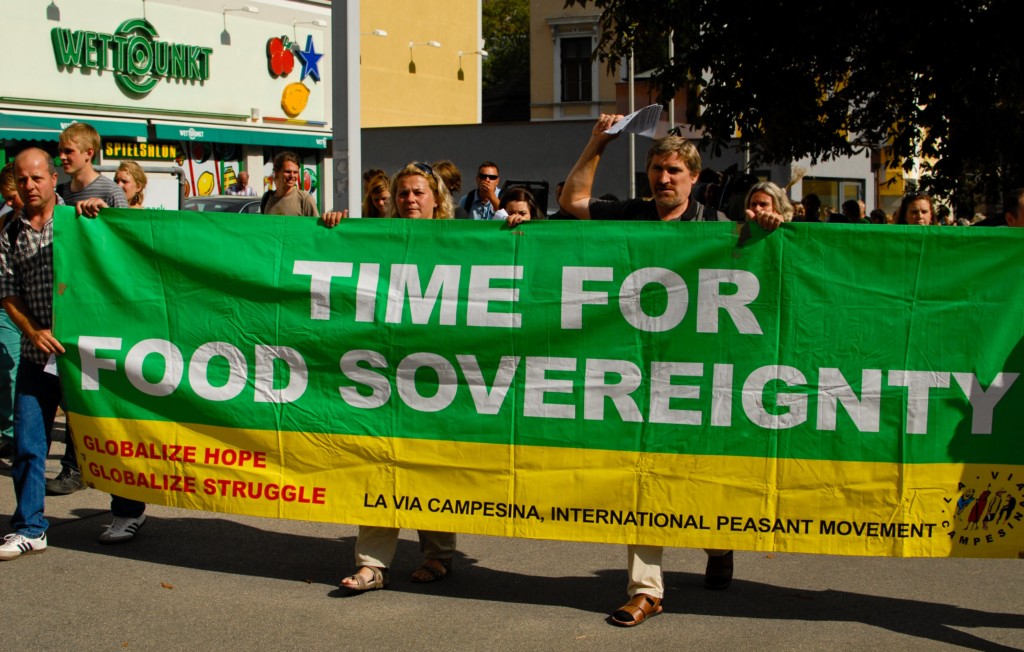
In calling for recognition of who produces food, food sovereignty and agroecology put points on the agenda which are missing from the top-down approaches of industrial agriculture. Access to land, water and basic infrastructure are necessary components to enable people to run their own food systems. Agroecology and food sovereignty support self-sufficiency and farming systems that are not solely reliant on external inputs. They avoid the dangers of relying on expensive fertilizers, herbicides and pesticides to support farms – which also happen to poison the soil, the air and the people who use them.
Industrial sized farms may produce more per unit of labour because of their highly mechanized methods of production. However, there is evidence to suggest that agroecological farming is highly productive and has far greater benefits to the environment and to people than its industrial counterpart. Rather than focusing solely on one crop for the market, smaller mixed farms can grow many different varieties of crops that enrich a healthy eco-system based on balance in the garden. They can take into consideration the importance of soil fertility, allow for crop rotation and inter-cropping, and increase organic matter with compost.
NGO Grain writes that:
“Industrial farming gets all the attention (and most of the land). It accounts for more than 80% of the fossil fuel emissions and uses over 70% of the water supply used in agriculture, but it actually produces only about 30% of the world’s food”.
Alongside this, values such as dignity, respect, mental well-being and justice are interlaced into agroecology. An attitude of caring for and giving back to the land is often the backbone to farms using these farming practices.
Movements of people around the world are working to reclaim the food system from corporate control. Challenging synthetic fertiliser use and the impact of fertiliser giants like Yara is an important part of that work. In response to Yara’s huge lobbying power and greenwashing strategies, they say we don’t need synthetic nitrogen fertilizers to feed the world, and argue this assumption is misguided and destructive.
According to Andi from the Free the Soil network:
“The climate justice movement has been successful in exposing the fossil-fuel industry as climate killers. But who knows about agro-industrial companies like Yara or DuPont? They are the Shells and Exxons of agriculture, and it’s time we point that out, and shut them down! We believe that direct action is needed if we are to stop the escalating climate crisis. We need to take action into our own hands.”
More info: https://freethesoil.org
Footnotes
(i) We use the highest bracket for declared spending. All data used is from the most recent lobbying declarations in the EU Transparency Register. We also use the overall number of lobbyists declared, rather than the full-time equivalent, which is also listed in the register.
(ii) For 2010 they declared up to €100,000, for 2011 up to €150,000, for 2012 they increased this to up to €600,000. The figure in 2013 was much higher – up to €7,500,000. For 2014, 2015 and 2016 they declared up to €799,999 each year, for 2017 up to €599,999 and for 2018 up to €499,999.
(iii) The exact amount is €16,664,491. Of course groups like CEFIC lobby on more issues than fertilizers, but the data they provide makes it impossible to disaggregate spending on fertilizer issues compared to other topics. The list of meetings refers to meetings held since November 2014 with commissioners, their cabinet members or directors-general at the European Commission (from information published by the Commission). However, this number doesn’t include the myriads of informal get-togethers and formal meetings with lower-rank officials which carry a big weight on policy-making, as the European Commission does not publish info on those.
Appendices
Directors
Svein Tore Holsether is Yara’s President and Chief Executive Officer. He took over after much internal conflict and legal issues within the company when several of the directors were arrested for corruption in 2015. Before joining Yara, Svein was the director of aluminium giant Sapa. That company recently hit the headlines after it faked test results over 19 years for aluminium components sold to NASA, leading to the destruction of two space missions worth $700m (£536m). Sapa is a unit of Norsk Hydro – Yara’s former parent company, and one of the world’s largest suppliers of aluminium. Norsk agreed to pay $46m back to NASA for the failures, less than 7 per cent of the damage it caused.
Tove Anderson is the Executive Vice President of Yara. She joined in April 2018 after working her way up through the company.
Lair Hanzen is the Executive Vice President of Yara in Brazil. Multinationals have a monopoly over fertiliser production in Brazil, where the market is shared between Yara (Norway), Bunge (US), and the Mosaic company (US).
Terje Knutsen is the Executive Vice President of Sales and Marketing who joined Yara in 1987.
Pablo Barrera Lopez is the Executive Vice President for Supply Chain. He previously worked at The Boston Consulting Group from 2009 to 2014.
Kristine Ryssdal has been the Executive Vice President, General Counsel since 2016. She previously worked for Statoil (now rebranded as Equinor), a Norwegian oil company which is majority owned by the Norwegian government. Statoil was the subject of another major Norwegian corruption scandal, fined NOK 20 million after being found guilty of bribery to secure contracts in Iran.
Lars Røsæg is the Chief Financial Officer. He previously worked at aluminium company Sapa. Prior to this, he worked with food giant, Orkla, who is based in Norway but target markets in the Nordic and Baltic Regions, as well as Central Europe and India.
Terje M. Tollefsen heads up Corporate Strategy and Business Development. He has had several positions in the company since 2002 and was previously the Managing Director of Norsk Hydro in Indochina.
Lene Trollnes is the Executive Vice President of People and Global Functions. She also used to work for Sapa and Norsk Hydro.
Board members
Yara’s board has two types of members: seven elected by shareholders, and four employee members elected by employees. The shareholder-elected members tie Yara further into Norway’s corporate elite, coming from some of the company’s biggest corporations – including the national railway company, Scandinavia’s biggest media conglomerate, and one of Europe’s largest renewable energy generators. Two of the employee members are shop stewards in the Industri Energi trade union, a relatively small specialist trade union with 58,000 members, which is a member of the Norwegian Trade Union Confederation and various international trade union federations.
Geir Isaksen. Chairman since 2018. CEO of Vy group – the Norwegian state-owned railway company (formerly known as NSB).
Trond Berger. Vice Chair. Chief Financial Officer of Schibsted– calls itself Scandinavia’s biggest media group with various online and print outlets across Scandinavia and also in Poland, including major news sites vg.no and aftonbladet.se. He is also a board member of Arcus (Norwegian drinks company), Polaris Media (owns 30 newspapers in Norway), and several Schibsted subsidiaries. Member of the Board since 2018.
Hilde Bakken. Executive Vice President for Production, Statkraft – a major hydroelectric and renewable energy generation company which is active Europe. Member of the Board since 2014.
Håkon Reistad Fure. Also on the board of Avida Holding and Avida Finans, a bank / financial services group active in Norway and Sweden. He is one of the youngest board members, with a finance background – previously an analyst at DNB bank, a state-backed bank which is one of Yara’s major shareholders.
Kimberly Lein-Mathisen. General Manager of Microsoft Norway. US citizen settled in Norway. New board member as of 2019.
Adele Bugge Norman Pran. Professional board director who currently serves on the boards of ABG Sundal Collier (“Nordic investment banking powerhouse”), Zalaris (HR and payroll company working across Northern Europe, including in UK and Germany), B2 Holding (debt collector which works for banks and companies in 23 European countries), Mesta (Norwegian road maintenance), Protector Insurance (land insurance company active in Scandinavia and also UK). New board member as of 2019.
John Thuestad. Executive Vice President Bauxite & Alumina at Hydro. Hydro, also known as Norsk Hydro, was Yara’s former parent company before Yara was spun off in 2004. It is a major global aluminium producer, active all over the world, and also generates hydroelectric power in Norway. Apparently “John is a true heavyweight in aluminium with over 30 years in the industry.” Member of the Board since 2014.
Eva Safrine Aspvik (employee board member). Member of the Board since 2019. A Trade Union Leader at Yara Glomfjord, she is an employee representative on the Board of Yara International. Member of the Industri Energi trade union. Trained as Skilled Chemical Process operator. Facebook: https://www.facebook.com/eva.aspvik
Rune Brattenberg (employee board member). Head of Chemical Compliance. Member of the Board since 2012.
Geir O. Sundbø (employee board member). Trade Union Senior Shop Steward of Yara Porsgrunn. Member of the Industri Energi trade union. Also Chairman of the European Works Council (EWC) for Yara International. Trained as Skilled Chemical Process operator. Member of the Board since 2010.

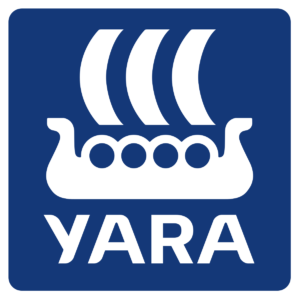 Key Points
Key Points